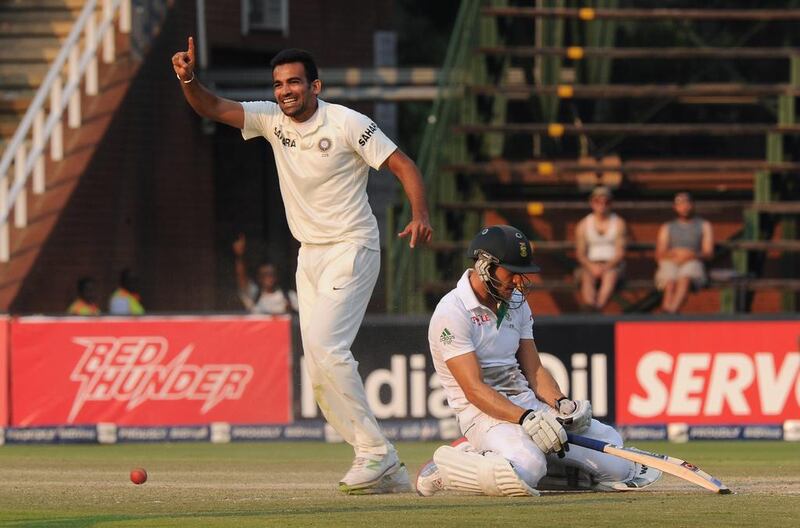It is easy right now to be distracted by the bigger picture surrounding India’s tour to New Zealand, the first Test of which begins on Thursday in Auckland.
It has been reported, for example, that the financial windfall from the broadcast rights of this tour for New Zealand Cricket (NZC) is approximately US$35 million (Dh128.55m). That makes it the biggest such windfall for any sport body in the country, surpassing even the $25m the New Zealand Rugby Union raked in for all revenues including broadcasting, attendance and sponsorship from the 2005 British & Irish Lions tour.
The last time India toured, in 2009, NZC pulled in $25m. So if New Zealand sides with the “Big Three” boards in the midst of restructuring international cricket, it is easy to see why.
There is an irony to this stance though, as the former England captain Michael Atherton pointed out in a typically perceptive column. Taking India’s shellacking by the hosts in the one-day series as a starting point, Atherton argued that New Zealand had been a better performing side than one of the big three (England) and probably the most progressive board of the three.
To pit New Zealand as the smaller team and lesser worthy board in cricket’s current shake-up was, Atherton argued, misplaced and representative of the arrogance with which the big three are taking over the game.
Be that as it may, the smaller picture, of battles on the field, has suddenly become as compelling, on its own because of the results of the ODI series, and also because of the bigger picture. Atherton was articulating what was, after all, a running theme through the ODI series: that of the underdog, smaller seven side, beating one of the big three and thus confirming that on-field performances had nothing to do with the power grab.
Suddenly, the Test series looks more difficult for India than might have been the case a few months ago. They were far better than many had expected in South Africa, or at least their batting was.
But gains there overshadowed that their loss in the second Test at Durban was a ninth in 10 away Tests and stretched a winless away streak to 12 Tests. The fact that is not their worst such streak is revealing of how poor India have been away historically (their next away Test defeat will be their 100th).
They lost, for example, 12 of their first 18 Tests away after gaining Test status in 1932 and did not win a single one abroad until their 44th attempt, in 1968, against New Zealand. That win was preceded by 17 consecutive losses away from home, dating back to 1959.
They went 26 away Tests without a win between 1981 and 1986 and then, having won in England, another 26 away Tests without a win until 1993. And then until 2000, 23 more Tests abroad without a win. So, this recent streak is not even close. But it should rankle more because it has come on the back of their most successful period away from home, starting from 2000.
The praise their batting received in South Africa was justified but it also dampened some of the criticism their bowling should have received. They failed, after all, to win a Test having set a target of 458, coming within two hits of losing it.
How much their bowling is struggling was particularly evident through the ODI series against New Zealand; Ravichandran Ashwin, for instance, picked up a single wicket in five ODIs and has just two wickets in his last nine internationals (including Tests).
The returning Zaheer Khan was initially impressive in South Africa but, at 35 and with a particularly weary body in tow, even a mind as sharp as his might struggle to sustain his performances over two back-to-back Tests (there is a three-day gap between the two Tests here).
The burden should fall to Umesh Yadav, Mohammed Shami, and maybe even Ishant Sharma. Alongside Ravindra Jadeja it is how their attack goes that is likelier to steer the fate of this series. India’s batting should hold up, even against what is a hugely underrated, but swiftly improving, New Zealand pace attack.
Combine this history, both recent and longer-term, with New Zealand’s own little home streak – just one loss in their last 11 Tests and a drawn series against England last year – and ask whether India failing to break their losing run will actually be a shock or not?
osamiuddin@thenational.ae





